PROTECT YOUR DNA WITH QUANTUM TECHNOLOGY
Orgo-Life the new way to the future Advertising by AdpathwayWhy prune at all? Perhaps you’d like to limit the height of a shrub, or you want to make a wonky-looking plant appear better in the garden. Or, you want to remove dead, damaged, or diseased wood.
Though fall feels like a good time to prune, it’s often best to wait until late winter or spring. Excessive pruning this season may lead to weak, tender growth that’s susceptible to frost damage. For best results, prune the specific shrubs on this list and avoid making cuts to plants that bloom on old wood.
The best shrubs for fall pruning are evergreens and species that bloom on new wood. They’ll regrow next spring, and flowers will appear in full. Never remove more than one-third of the total growth of a shrub at a time, and use sharp, sterile pruning shears to make cuts.
These 11 shrubs tolerate pruning cuts during the fall. Prune to remove dead wood, to keep the plants short, or to make them look better. How to prune depends on the plant in question. Learn specific methods for each shrub, and you’ll know exactly what to do this fall.
Vanilla Strawberry Hydrangea
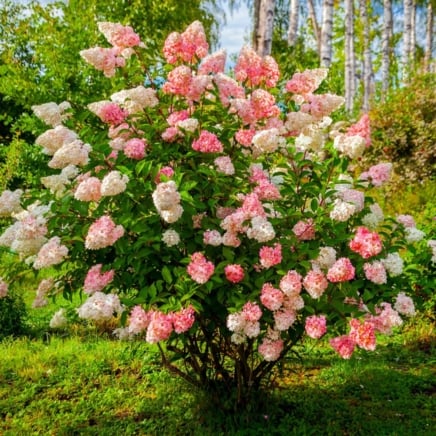
Vanilla Strawberry Hydrangea
Peggy Martin Climbing Rose
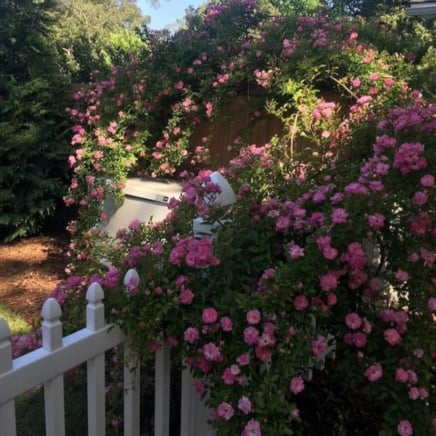
Peggy Martin Climbing Rose
White Wedding Hydrangea
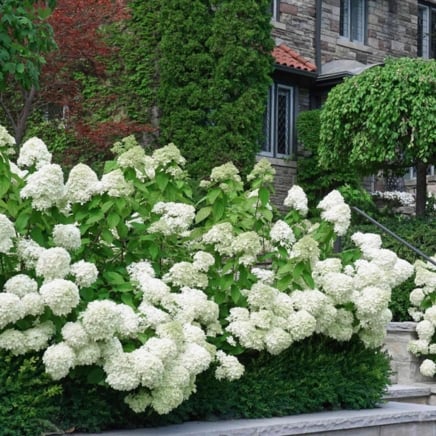
Scotch Heather
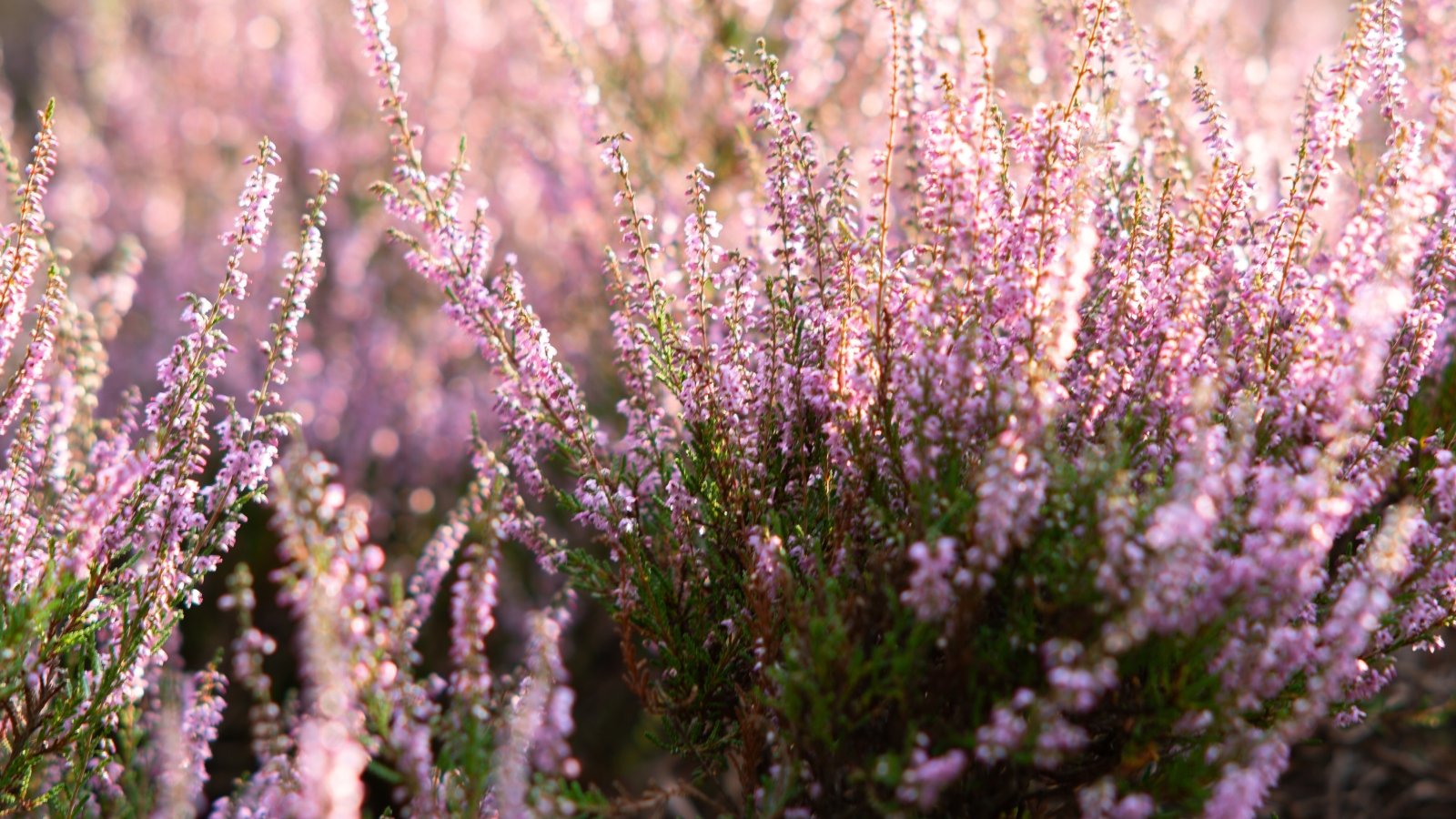 Compact growth keeps this plant looking neat.
Compact growth keeps this plant looking neat.Scotch heather is a low-growing shrub that originates from parts of Europe and Asia. It’s a fine-needled plant with thin leaves that resemble the needles of spruces and pines. At the end of the growing season, small flowers appear all along the stems.
How to prune scotch heather depends on your climate. These shrubs prefer fall pruning if you live in a warm climate with few frosts during winter. Wait for the flowers to fade, then cut back the stems to keep the plant bushy. Trim the green, new stems, and avoid cutting the bare woody branches below the foliage.
In cold climates, wait until late winter or early spring for pruning. Let the flowers fade and allow the plant to enter dormancy, then cut back the late growth to keep the shrub bushy and compact.
Ivy
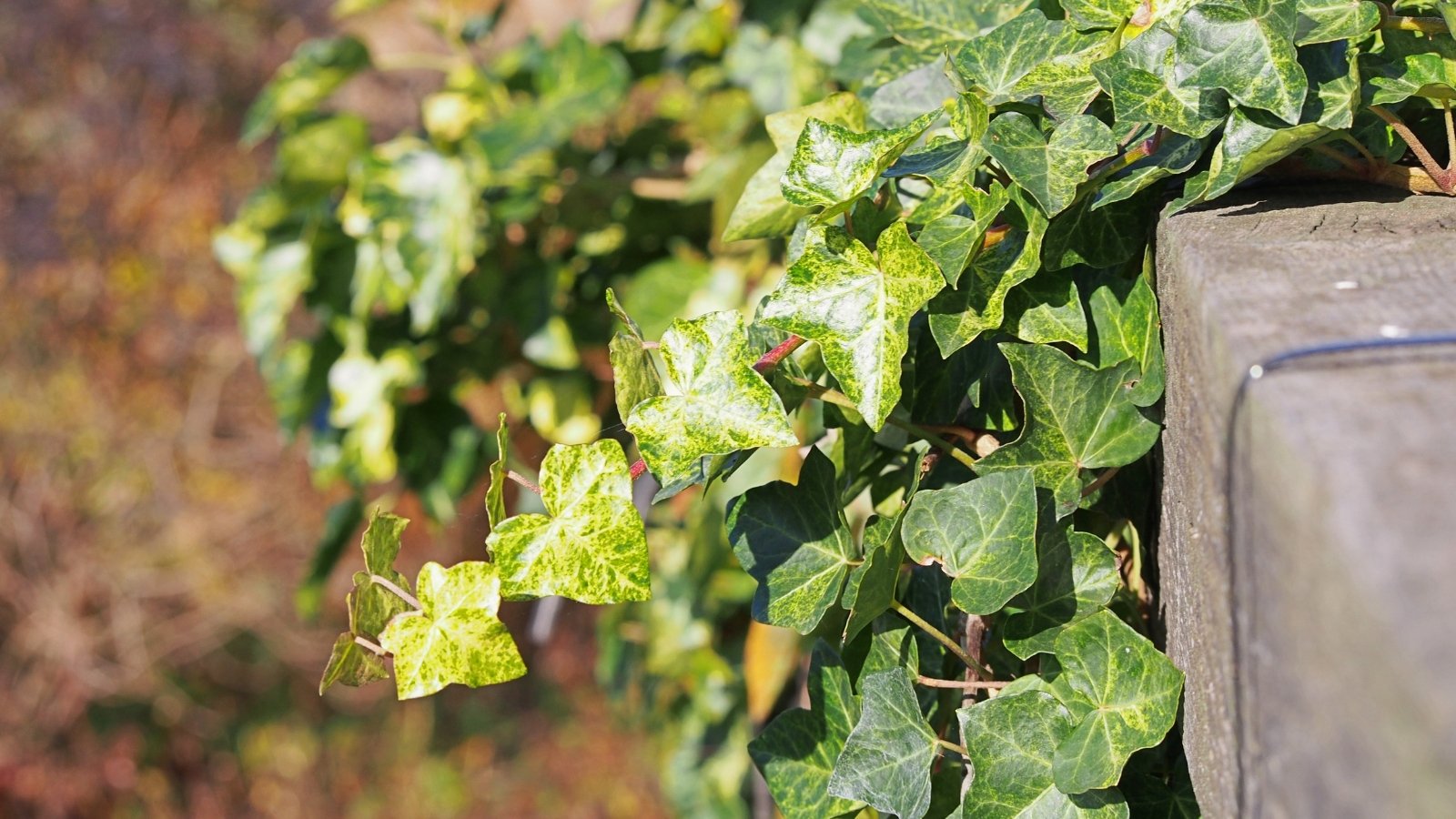 Rapid growth makes containment a constant task.
Rapid growth makes containment a constant task.Ivies are hardy and long-growing. They’re difficult to eradicate, and they frequently overrun landscapes, forests, and wild areas. They start as a vine and climb to create a shrubby form.
In the shrubby form, ivies flower and produce berries with seeds. Birds eat the berries and spread the seeds throughout the U.S. Consider using a native vine instead of invasive ivy outdoors to avoid having it spread into natural areas.
If you want to limit ivy’s growth, prune it any time of year. Its vigorous nature will allow it to rebound without issues. Snip the berries to prevent them from spreading, and trim vines and branches to reduce the plant’s size.
Juniper
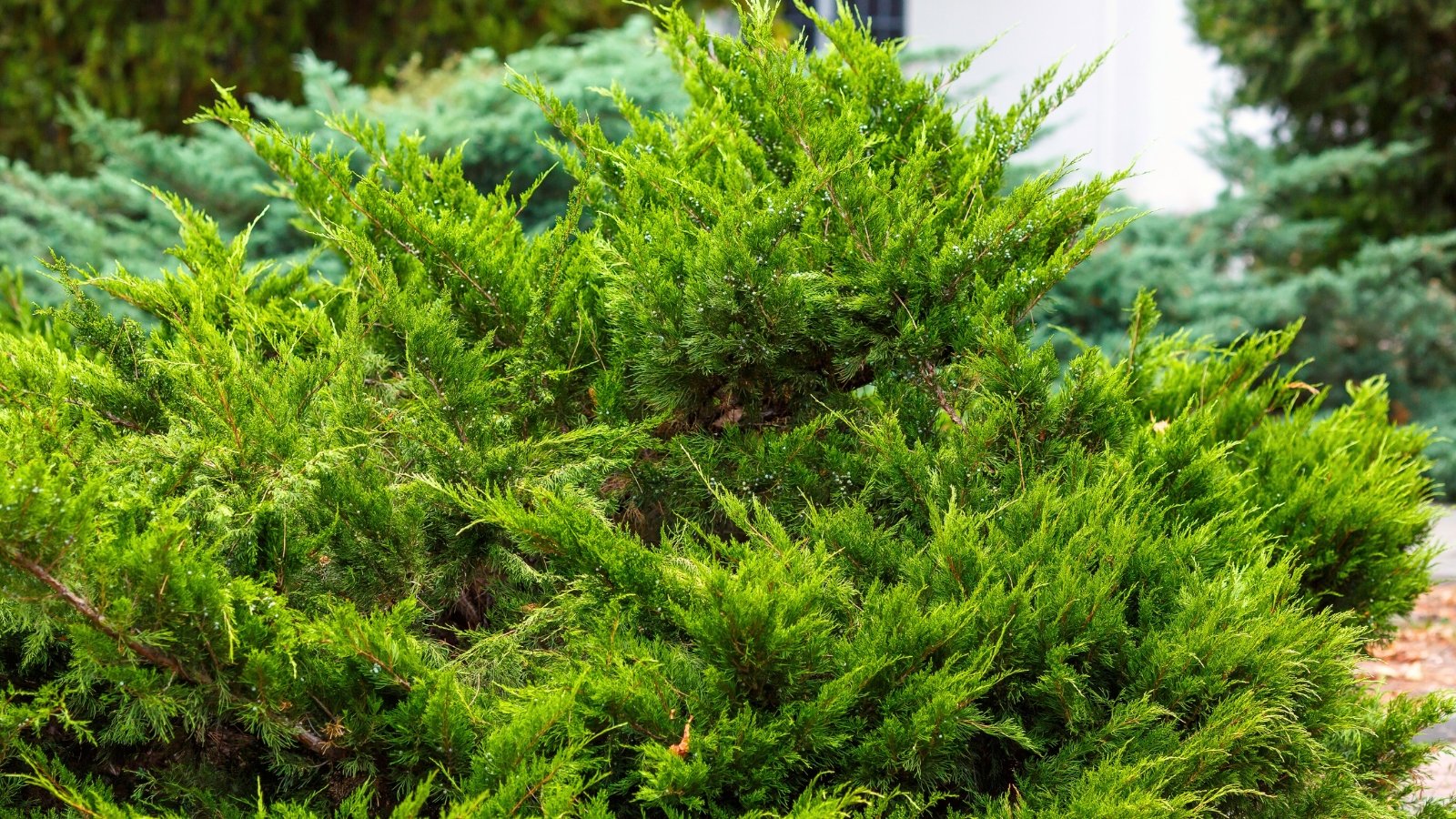 Low-growing forms spread, forming a natural groundcover blanket.
Low-growing forms spread, forming a natural groundcover blanket.Junipers are evergreen trees, shrubs, and groundcovers with scaly foliage. They stay green year-round, though some varieties have a yellow or blue tinge to their leaves. Like many conifers, junipers won’t resprout from bare stems. They require careful pruning to stay healthy and vigorous.
Make light trimmings to junipers during the fall. Wait until after a hard frost when the shrubs enter dormancy. Then, remove dead, diseased, or criss-crossing branches.
To prune, remove entire branches right above the collar or at the junction of another limb. Don’t leave stubs or cut limbs—always prune back to another growth point with green leaves to ensure new sprouts appear.
Spruce
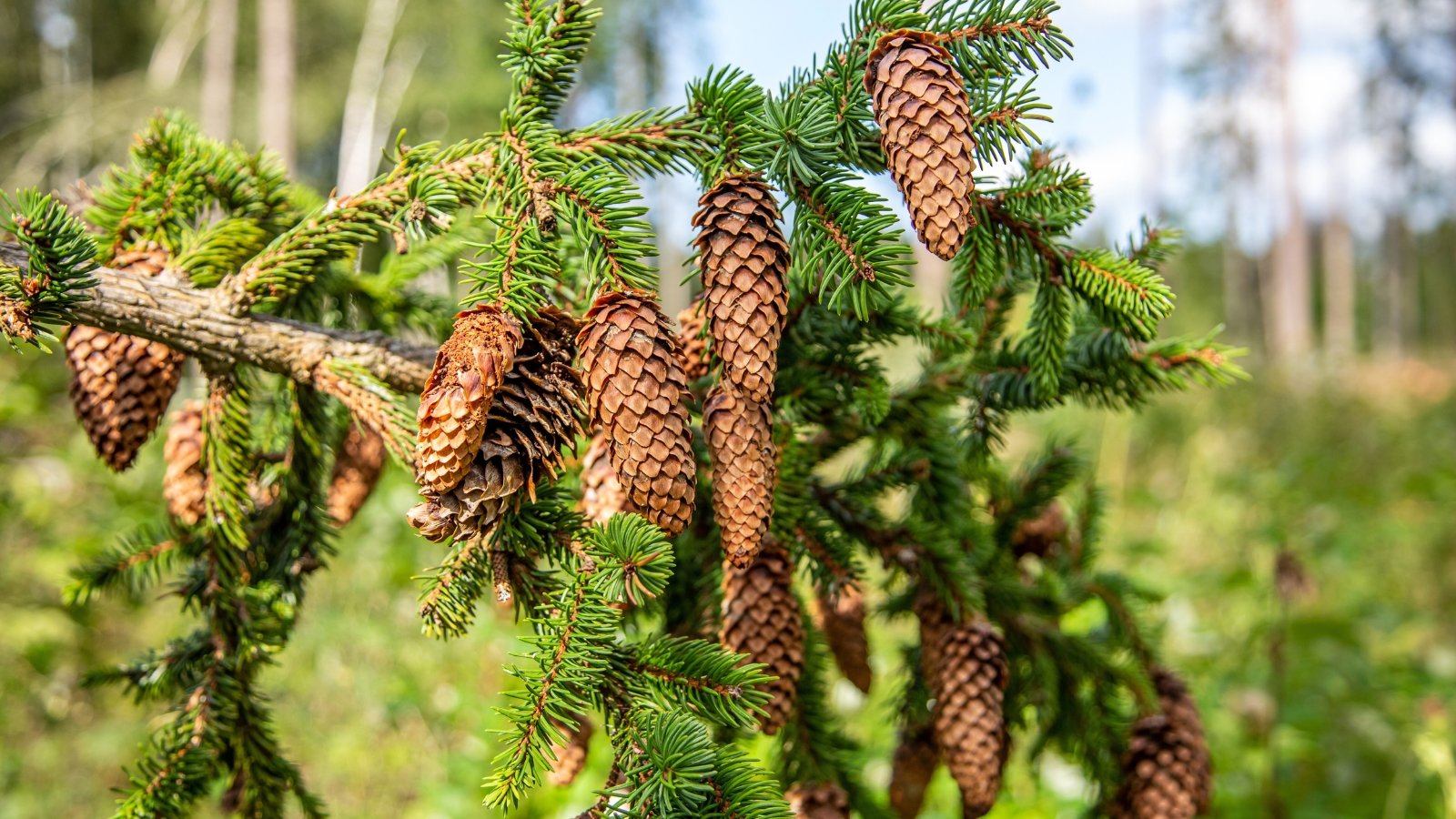 Young trees shape beautifully with gentle, regular shearing.
Young trees shape beautifully with gentle, regular shearing.Like junipers, spruces are evergreen conifers that require careful pruning to look their best. They won’t resprout from bare wood, so it’s best to trim the branches back to where the needles are already growing.
Many spruces are large trees, while a select few grow into small or medium-sized shrubs. They need little pruning, and they benefit from light trimming in the fall to keep them bushy, dense, and compact.
If you’d like a square or formal shape from your spruce shrub, try fall pruning when it’s young. It’ll require regular shearing to look its best in the future, but it’ll stay short and fluffy for as long as you shear it.
Shrubby Yew Pine
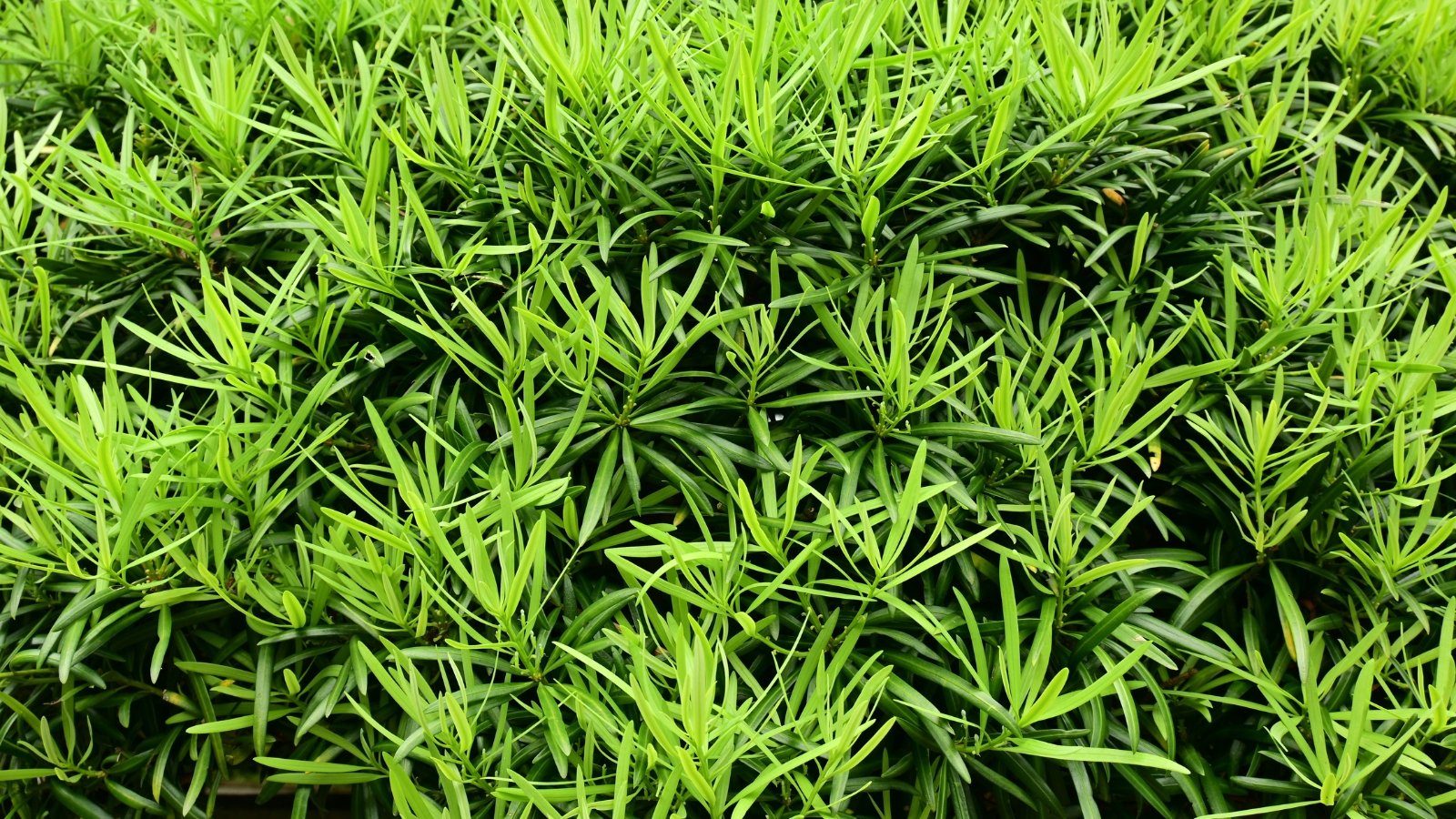 Evergreen form allows creative shaping year after year.
Evergreen form allows creative shaping year after year.Shrubby yew pines are smaller, bushier varieties of the large yew pines, Podocarpus macrophyllus. Both work well as shrubs, though the shrubby variety stays small without pruning, while the tree species requires regular pruning to stay short.
Unlike other conifers, this evergreen species responds well to cuts. It resprouts from bare wood, and regular shearing will keep it growing in the shape you desire. Have it form a sphere, a cube, or a cone!
Prune lightly in the fall, and avoid making excessive cuts at the end of the growing season. Do major pruning and renovation at the end of winter before new growth occurs.
Live Oak
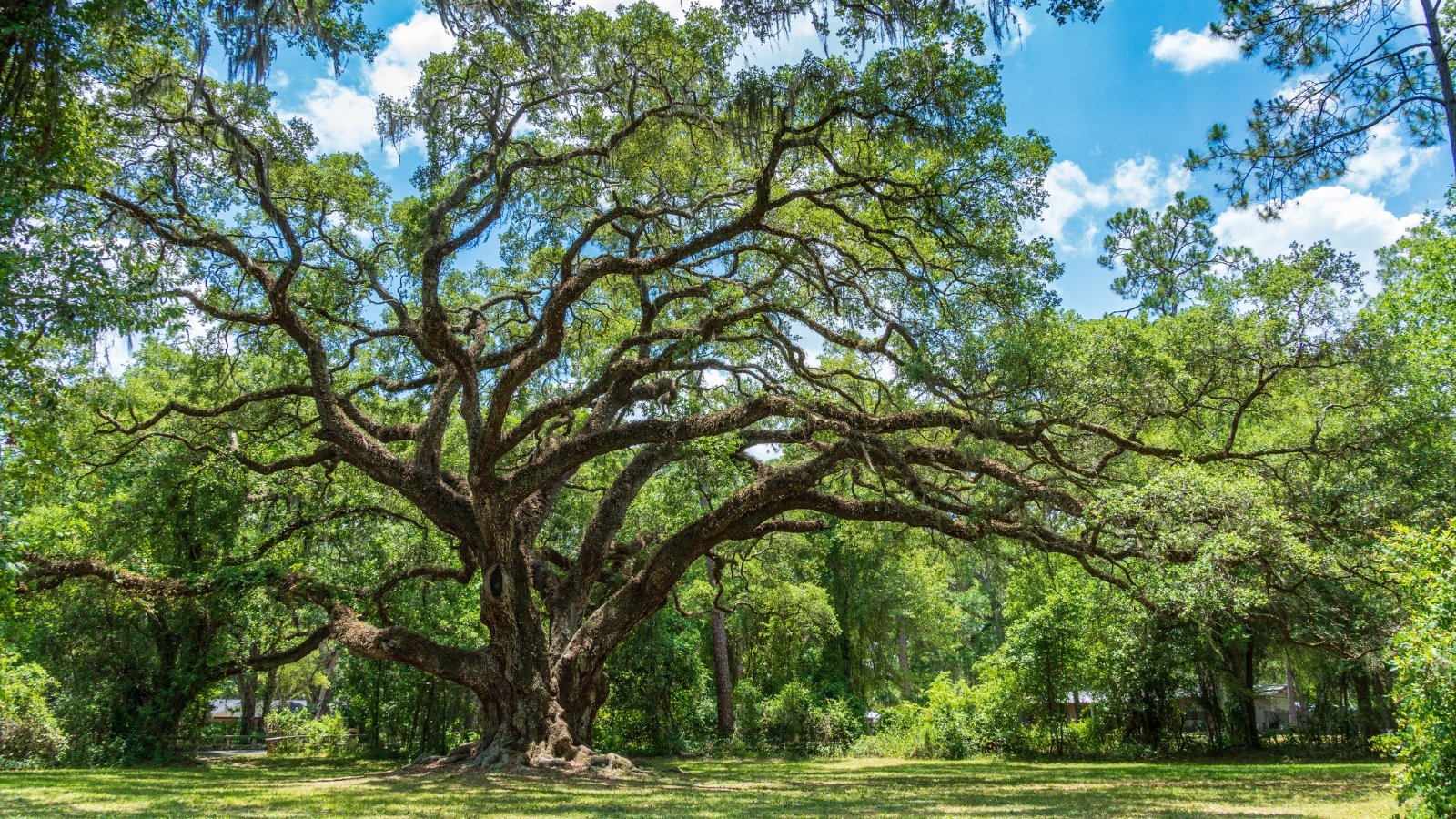 Evergreen leaves stay lush through every season.
Evergreen leaves stay lush through every season.Live oaks are evergreen. They don’t lose their leaves like the deciduous oaks. They retain their leaves year-round, and they respond well to pruning when they’re dormant. Most are tall trees, though some stay short and shrubby.
Live oaks generally enter dormancy from July through October, and they sprout new growth during the cooler months. Make small cuts as necessary during these months, and avoid lopping off large branches or topping trunks when fall pruning these shrubs.
Rose
 Shorten tall branches so new sprouts grow evenly.
Shorten tall branches so new sprouts grow evenly.Most rose pruning occurs after the growing season, in late winter or early spring. You may make preemptive cuts in the fall to prevent tall canes from knocking into each other or falling over during the cold months.
When a tall cane finishes blooming during the growing season, cut it down to the ground to encourage new, shorter sprouts to form. Then, in autumn, shorten any tall canes still standing.
Remove crossing or thin canes, and snip off the red-orange hips to encourage more blooms next year. Growers in cold climates should wait until after the last frost of spring to do most of their rose pruning.
Hemlock
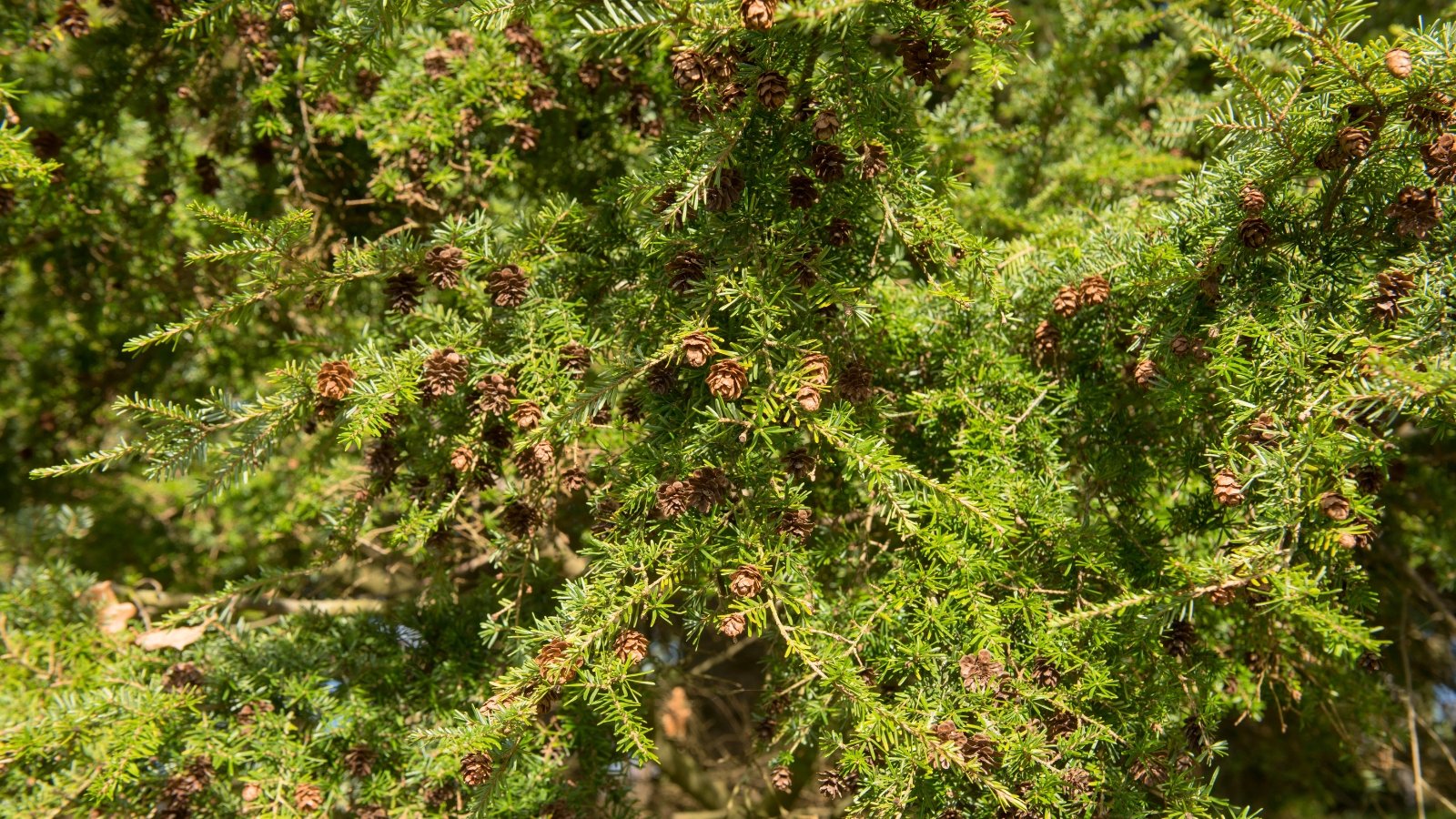 Overgrown limbs benefit from light trimming anytime, year-round.
Overgrown limbs benefit from light trimming anytime, year-round.Most hemlocks are giant trees, though some dwarf cultivars exist for the home garden. Common hemlock shrubs like ‘Little Joe’ and ‘Gentsch White’ stay round, short, and stubby. The shrubs require minimal fall pruning to look their best.
If you do want to trim your hemlocks, do so anytime, year-round. Remove entire branches down to their collar, and lightly trim wonky or overgrown branches back to healthy shoots.
Hemlocks grow as young trees in the shade. Then, when taller trees die and fall over, they take advantage of the extra sunlight to grow tall and thick. Shrubby hemlocks grow best if you keep them in full sun or partial shade during the growing season.
Herbaceous Peony
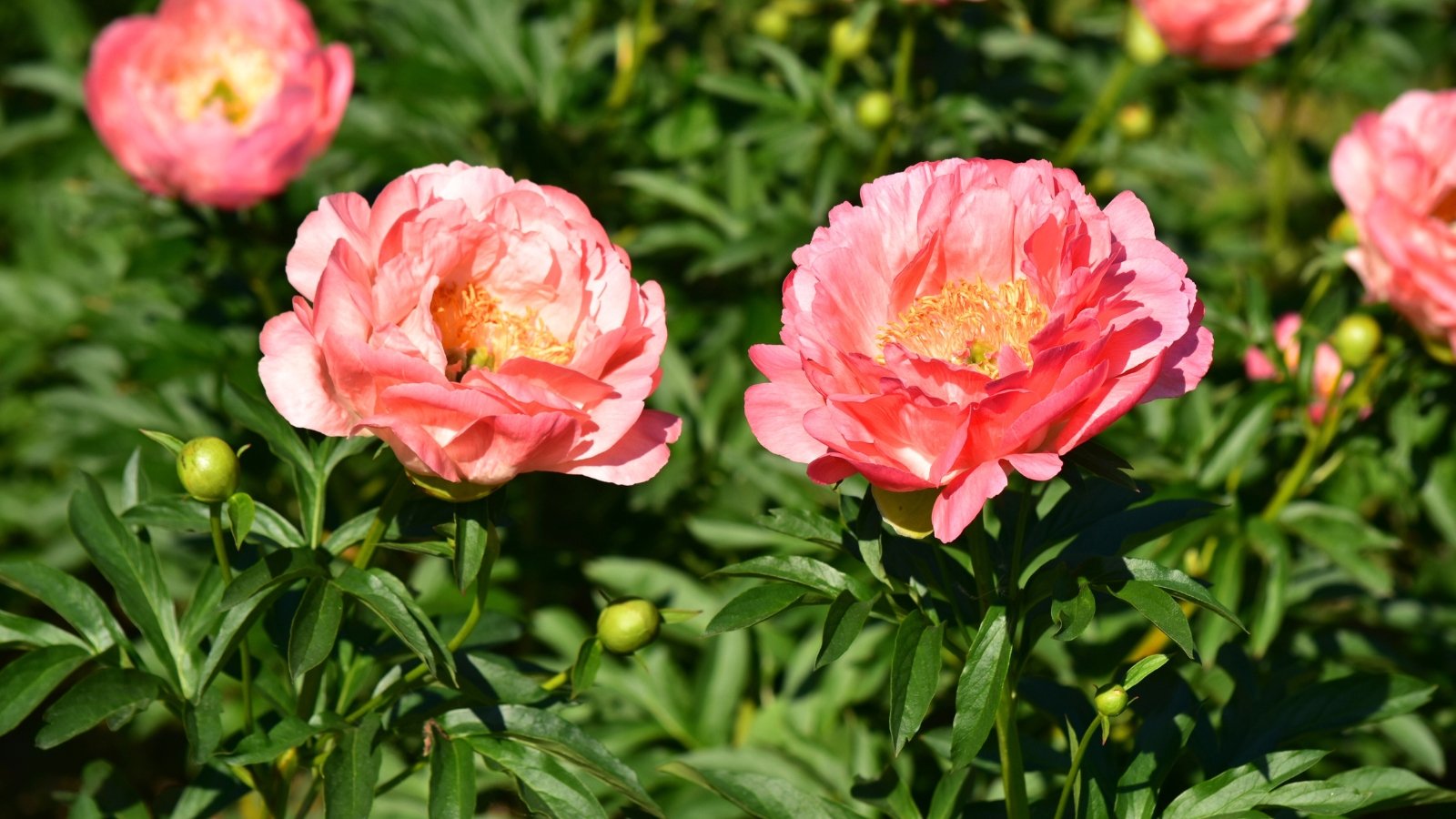 Spring rewards follow simple winter care and cleanup.
Spring rewards follow simple winter care and cleanup.Herbaceous peonies are incredibly hardy garden hybrids. They lie dormant underground for the winter and emerge with fresh growth in the spring. Because of their perennial nature, the shrubs benefit from annual fall pruning.
Make cuts this season to prepare your peonies for the winter months. Wait until the leaves and stems turn yellow and brown, then cut all the growth back to the ground.
Smooth Hydrangea
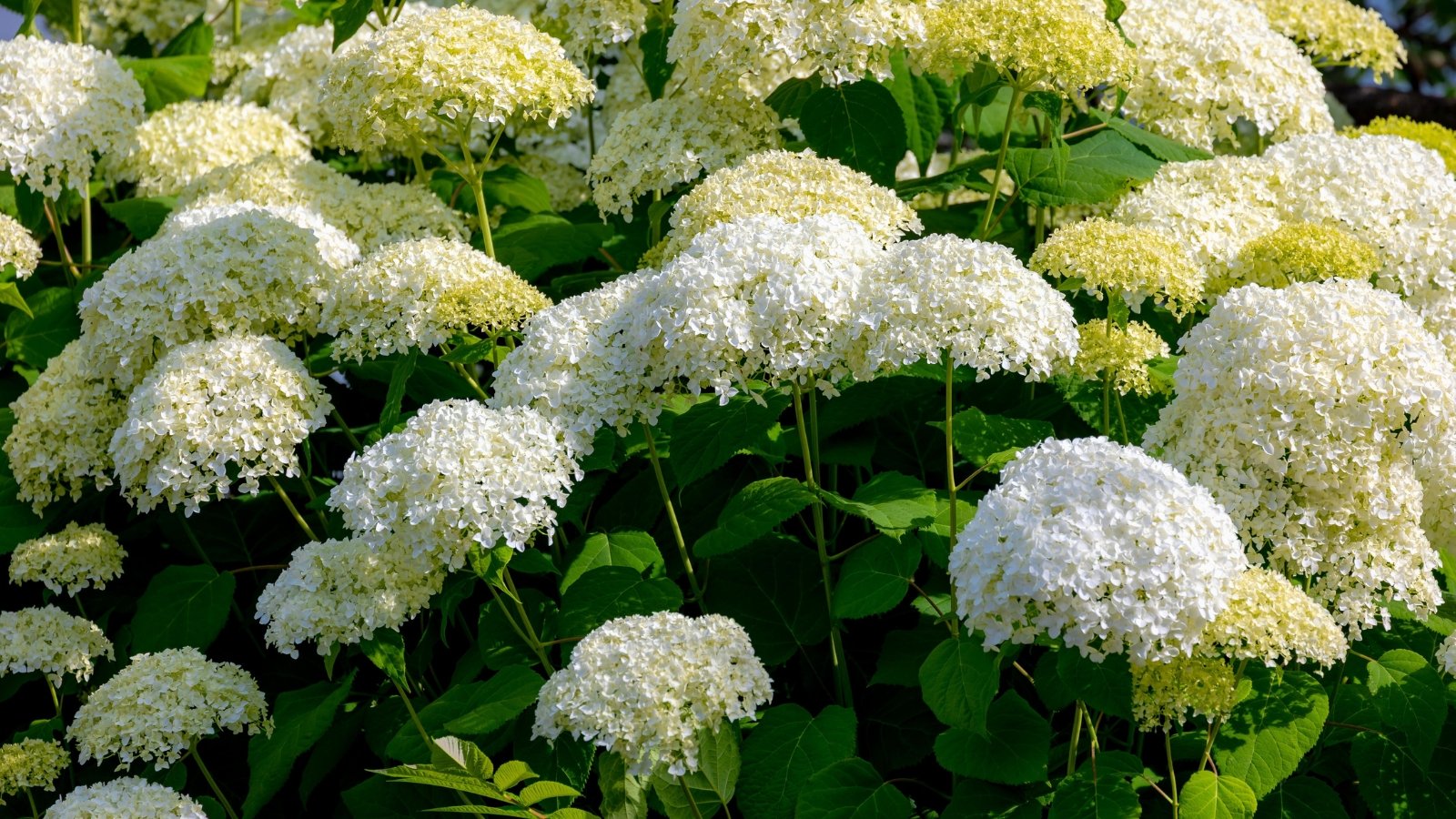 Shaping branches now helps flowers flourish later.
Shaping branches now helps flowers flourish later.Whether to prune a hydrangea depends on when it blooms. Some bloom on old wood from the previous season, and others bloom on new wood that emerges in spring. You may trim new wood bloomers during the fall season to shape them or limit their height.
Smooth hydrangeas are one of the types that bloom on new wood. Trim them anytime during the growing season to shape and control their structure. The best time to prune them is in late winter or early spring, before new growth occurs.
Use the fall season to trim overgrown branches and prepare the shrubs for winter. Remove crossing or rubbing stems, and snip off old blooms and dead branches.
Panicle Hydrangea
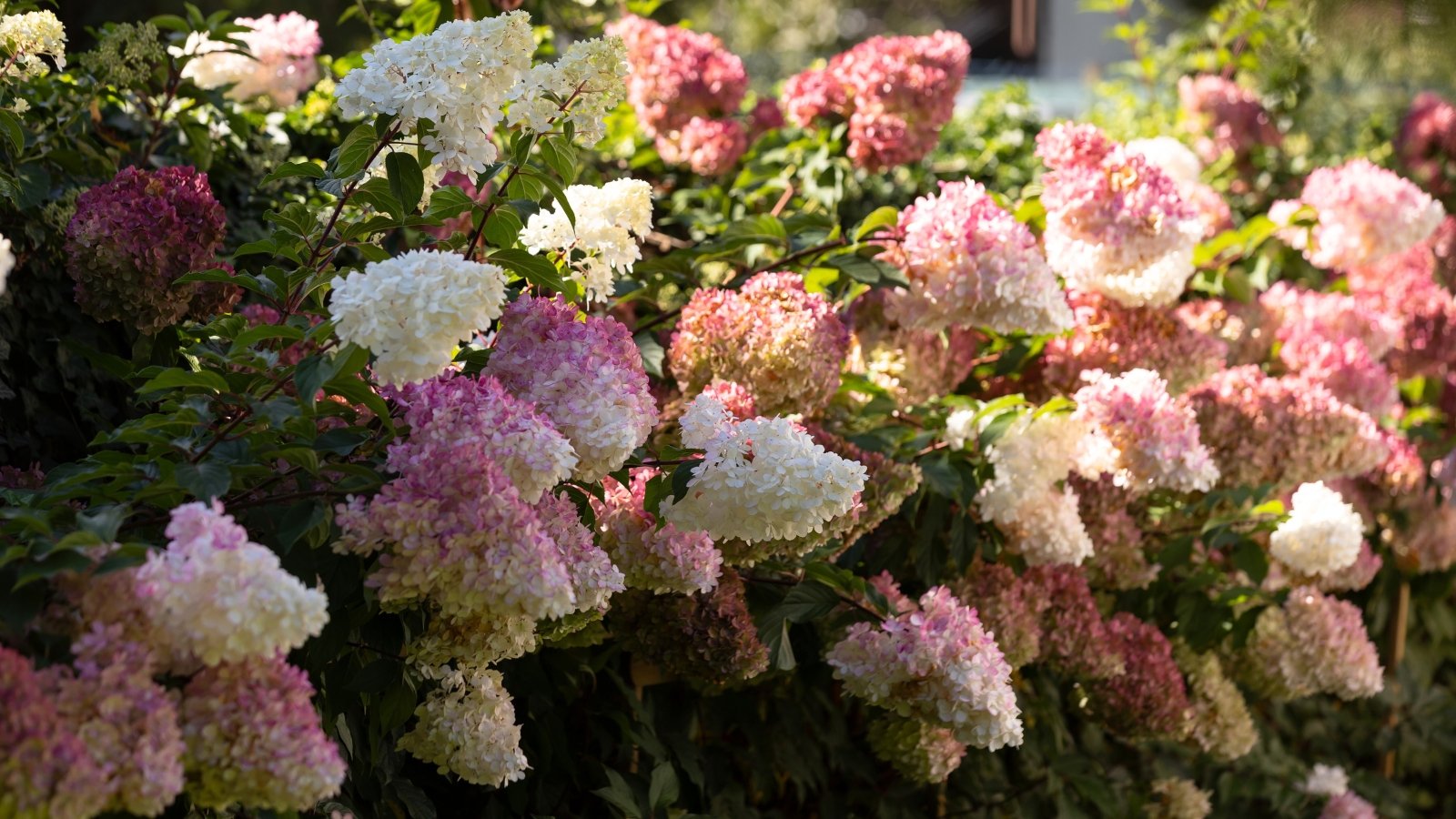 Light trimming keeps the growth bushy and flowers abundant.
Light trimming keeps the growth bushy and flowers abundant.Panicle hydrangeas, like smooth ones, bloom from new growth that sprouts early in the season. They appreciate a light trim in autumn to stay bushy and full of blooms. If left to grow, these types will reach epic heights of up to 25 feet tall!
Aside from removing dead, diseased, or damaged wood, you may also use this time to influence next year’s growth. For bigger blooms, thin the stems so that five to ten remain. If the shrub is overgrown, rejuvenate it in late winter by cutting it to the ground.
Key Takeaways
- Fall is an ideal season to trim branches and prepare shrubs for the winter. It’s not a good time for rejuvenation or hard pruning.
- Wait to do the bulk of pruning work until late winter or early spring for most woody perennials.
- Use sharp and sterile pruners to make clean pruning cuts.
- Remove the three D’s: dead, damaged, and diseased wood.
- Take care when pruning evergreens, as many won’t sprout new leaves from bare wood.
Frequently Asked Questions
It’s good to avoid pruning during the extremes of the year. Prune in late winter, fall, or spring, and avoid pruning in the thick of winter or the middle of summer.
You may trim the plants on this list in October. Avoid pruning old wood bloomers in the middle of fall, as you’ll lop off next year’s flowers.
No, it’s best to shear them in summer and do hard pruning in spring.


 1 day ago
7
1 day ago
7

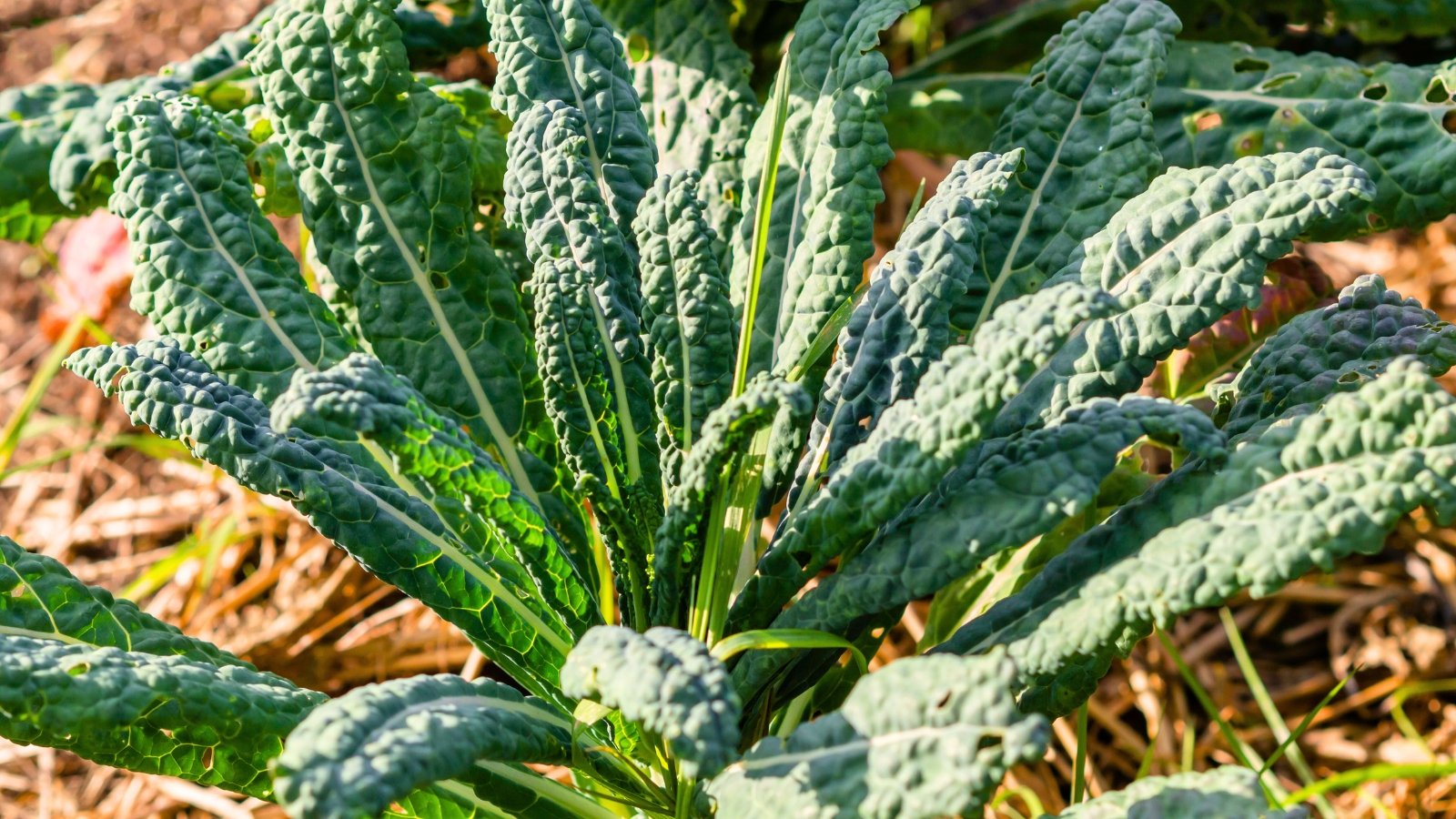



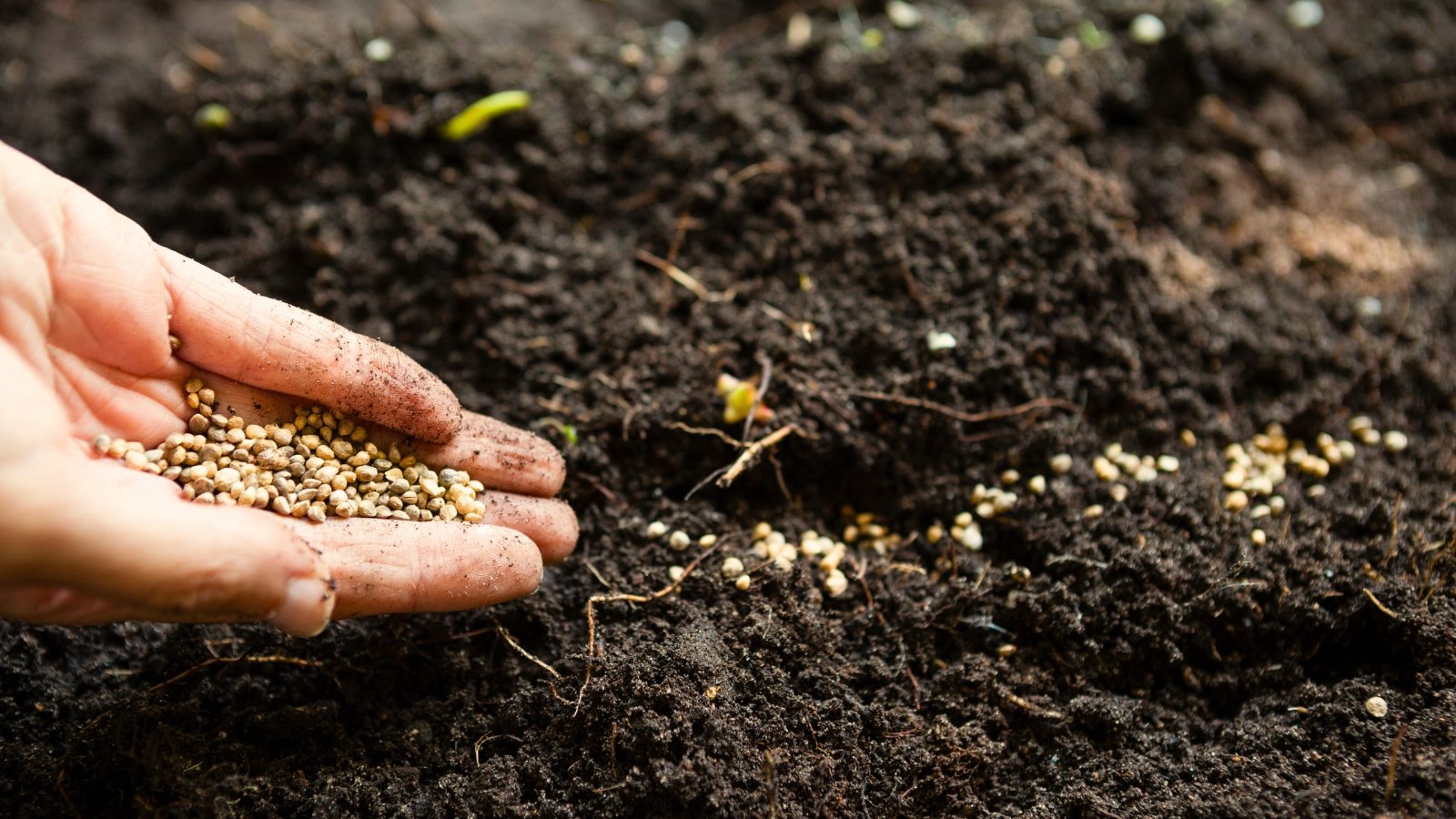















 English (US) ·
English (US) ·  French (CA) ·
French (CA) ·